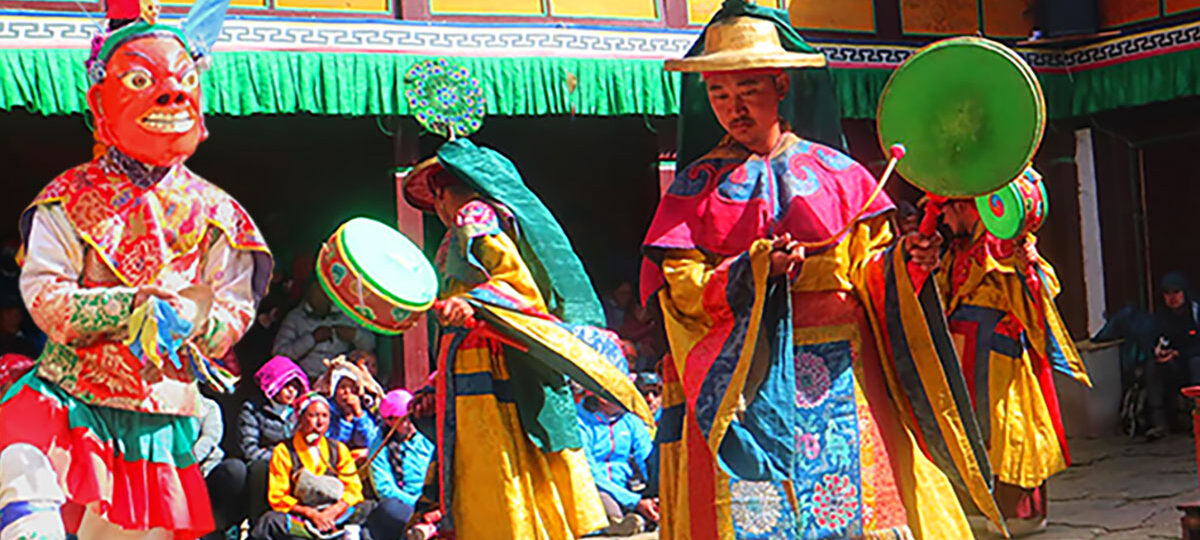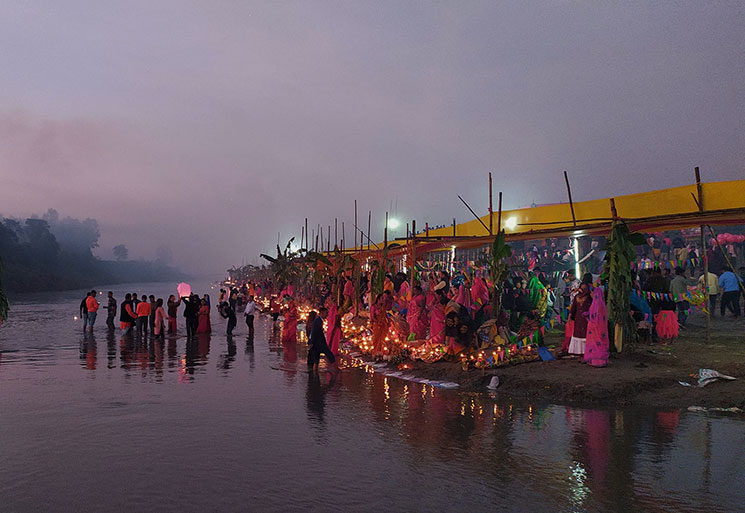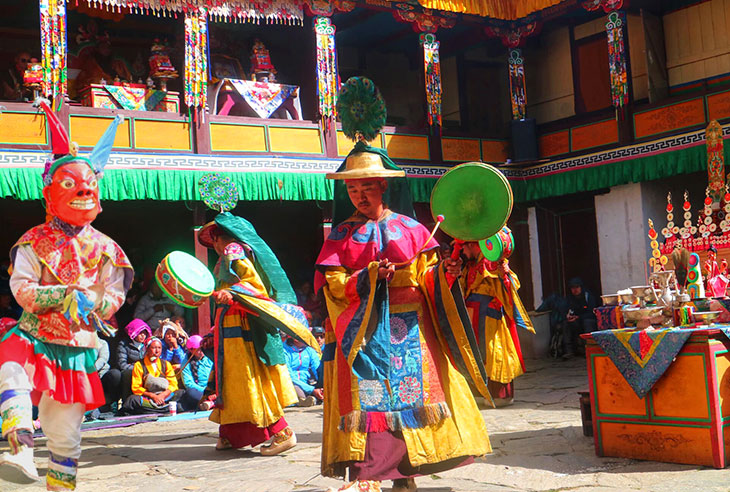Although Nepal is small in its geographical settings, different people from various castes, creeds, religions, and other domains live here, resulting in a diverse set of festivals and events.
Apart from magnificent snow-capped mountains, beautiful scenic vistas, and other natural settings, Nepal has so much to offer when it comes to festivals and events. If you are a culture lover, you will see the most distinctive cultural aroma within a small area.
Festivals from Nepal are more associated with religion and ethnicity. The type of festivals differs with different religious and ethnic groups. Regardless of cultural and ethnic differences or religious or traditional views, people come to commemorate these festivals with zeal and enthusiasm.
Although there are numerous festivals celebrated in Nepal, today in this post, we will discuss the major ten festivals of Nepal.
So, let’s get started.
Table of Contents
Dashain
Dashain is one of the major festivals of Nepal celebrated by the majority of the country’s population. It is also called Vijaya Dashami or Bada Dashain and is known as Dussehra in India.
Dashain is celebrated to remember the victory of god over evil. According to the legends, Goddess Durga defeated a dangerous demon called Mahisasura. Another legend suggests that God Rama defeated Ravana, the King of Lanka. These fights between gods and evils continued for 10 days; hence the festival is celebrated for 10 days. In these 10 days, different gods and goddesses are worshipped for peace and prosperity.
On the last 10th day of Dashain, elders put on tika to youngsters and bless them with health, wealth and prosperity. Families and relatives scattered over different areas meet up for the ceremony and enjoy this festival with different foods and drinks.
According to the Nepali lunar calendar, Dashain is generally celebrated between the starting of October and the end of November.
Tihar
The next big festival of Nepalis is Tihar, the festival of light and happiness. Tihar is also known as Deepawali in Nepal and Diwali in India. Tihar is followed by Dashain. Tihar is celebrated for 5 days. The first four days of Tihar are dedicated to different animals like dogs, crows, cows, and ox.
The first day of Tihar is celebrated by worshipping crow. Crows are believed as messengers of the death deity Yama. People make offerings of grains and sweets to the crows. Devotees believe that by feeding the crows, they can please the Yama and avoid death and grief for the coming year.
Similarly, on the second day of Tihar, dogs are worshipped for their loyalty and honesty. The third day of Tihar is called Gai Puja and Laxmi Puja; Gai (Cow) is considered a sacred animal in Hinduism. She’s also the Vahan (vehicle) of Laxmi, the goddess of wealth. On this day, both cows and goddess Laxmi are worshipped.
On the fourth day of Tihar, people worship Ox for helping in labor works on farms also being the companion for cows. Similarly, people worship Govardhan hill by making a symbolic replica using cow dung.
Finally, on the fifth day of Tihar, brothers and sisters celebrate the festival by putting 7 colored tika to each other. Sisters celebrate Tihar by blessing their brothers for health and longevity. She offers her brothers different forms of rotis (bread) and foods.
According to the Nepali lunar calendar, Tihar usually falls between the mid of October and the end of November.
Chhath
The next major festival from Nepal that is cherished by the majority of Madhesi people is Chhath. Chhath is dedicated to the Solar deity sun for making life possible on earth. It is celebrated for four long days. People fast and worship the Sun as paying homage for bestowing his benevolence and light over the people on earth. On the night before the Chhath festival, worshippers light lamps, sing & dance, and sleep on the banks of rivers.
Holy bathing, fasting and refraining from drinking water, kneeling in water, and offering prasad and arghya to the setting and rising sun are the few rituals performed during Chhath Parva. After the worship and fasting end, holy feasts are made that include various foods like thekuwas, rice-made laddus (sweets), and more.
Chhath Parva falls somewhere between October to November.
Buddha Jayanti
Buddha Jayanti marks the birthday of Lord Gautam Buddha, the light of Asia. Buddha Jayanti is also known as “Buddha Purnima”. This festival is celebrated by Buddhists and Hindus all over the world. On this day Buddhists from around the world visit Lumbini, Nepal, the birth place of Lord Buddha.
Various gumbas, monasteries and Buddhist temples are filled with devotees. Different kinds of dances are performed, processions are taken and jatras are performed. People enjoy this festival with dances and peaceful foods.
Buddha Jayanti is usually celebrated in April or May.
Maha Shivaratri
Maha Shivaratri is another great festival of Hindus. Hindus take Lord Shiva as their supreme deity and celebrate this festival to worship and remember him. Magnificent celebrations are taken during the night of Shivaratri in Shiva temples around the country. Milk, flowers and other offerings are offered to the “Shivalinga.” Many Hindu devotees from India visit the Pashupatinath at Kathmandu during this festival. The devotees perform various dances during the night and sing “Bhajans” and “Kirtans” to please Lord Shiva.
Many devotees cherish this festival by consuming “Bhang” , an intoxicating substance made up of sweets, milk and marijuana.
Maha Shivaratri is celebrated in the month of Shrawan (February or March) as per the Nepali calendar.
Maghe Sankranti and Maghi
Maghe Sankranti and Maghi are two different festivals celebrated during the first day of Magh of the Nepali calendar. The festival anticipates warmer weather and brighter days of wellness and fortune as the winter season comes to an end.
The Tharu people of madhesh celebrate this day as the new year and call it “Maghi.” They celebrate this festival by worshipping different gods followed by feast and dance. They eat different cultural foods like “Ghongi”, “Dhikri”, home-brewed rice beer, local chicken, and much more.
On the other hand, people from other ethnicities celebrate this festival as Maghe Sankranti. They worship different gods and eat different kinds of food that includes “Til Ko laddu” (Sweet made up of sesame seeds), sweet potatoes, boiled cassava and more.
Maghe Sankranti is celebrated on the very first day of Magh as per the Nepali calendar (January).
Teej
Teej also known as “Haritalika Teej” is one of the great festivals of Hindu women in Nepal and some parts of India. During Teej, married females worship lord shiva and carry out fasting for their husband’s longevity whereas unmarried women carry out fasting to get a good husband.
Womens wear red dresses mainly “Saree” and “Blouses” and flaunt their jewelleries to go to their maternal houses. They eat different foods like rice cooked in ghee, vegetables, fruits and more. The food that is eaten during Teej is called “Dar”. Different programs are organized where groups of women sing and dance to celebrate Teej.
Teej falls somewhere between July and September.
Krishna Janmashtami
Krishna Janmashtami is celebrated to cherish the birthday of Lord Krishna. As per the Hindu legends, Lord Krishna is believed to be the avatar of Lord Vishnu, who was born to destroy evil. He plays an important role in mentoring Arjuna in Mahabharata as well. People celebrate this festival by visiting Krishna temples, worshipping lord Krishna and enjoying Krishna Leela, a symbolic play of Lord Krishna from his young age. People even celebrate this festival by singing “Bhajans” and “Kirtans” during the night. People also play different games of breaking pots filled with butter.
Shree Krishna Janmashtami falls somewhere between August and September.
Holi
Holi, also known as Falgu Purnima, is the festival of colors. People celebrate this festival by putting different colors and splashing mixed color water using water guns over their friends, families and relatives. The Holi celebration has cultural importance in the Nepali Hindu traditions. It is a joyful day to reflect on and correct previous mistakes, to resolve issues by meeting new people. Holi festivities begin the night before Holi with a “Holika Dahan”, in which people assemble to perform religious rites in front of a bonfire and pray to the god for the destruction of their internal evil. In Nepal Holi is celebrated for two days, one day is separated for the hilly region whereas the other for the Terai region.
Holi falls in the month of Falgun as per the Nepali calendar (March).
Mani Rimdu
Mani Rimdu is an original festival from Tibet which was started in the early 1900s at Rongbuk Monastery. Later it was also cherished by the people of the Everest region of Nepal. It is a 19-day Buddhist celebration held in Nepal’s Everest area to commemorate Guru Rinpoche Padmasambhava’s establishment of Buddhism. Mani Rimdu begins on the first day of the Tibetan lunar calendar’s tenth month, which falls between October and November in the English calendar.
The monasteries of Tengboche, Thame, and Chiwong are decorated for Mani Rimdu. At the monastery, a large group of Lamas and Sherpas gather to pray for the world’s well-being. Masked dances, prayers, and grand feasts are part of the festival.
Mani Rimdu festival starts after the 15th day of Dashain (Kojagrat Purnima).
You read the story until the end. Looks like you love people and their culture. Do you want to witness more than 100 ethnic groups and their distinctive culture and festivals? Enquire us for a tailored trip to Nepal from here.



